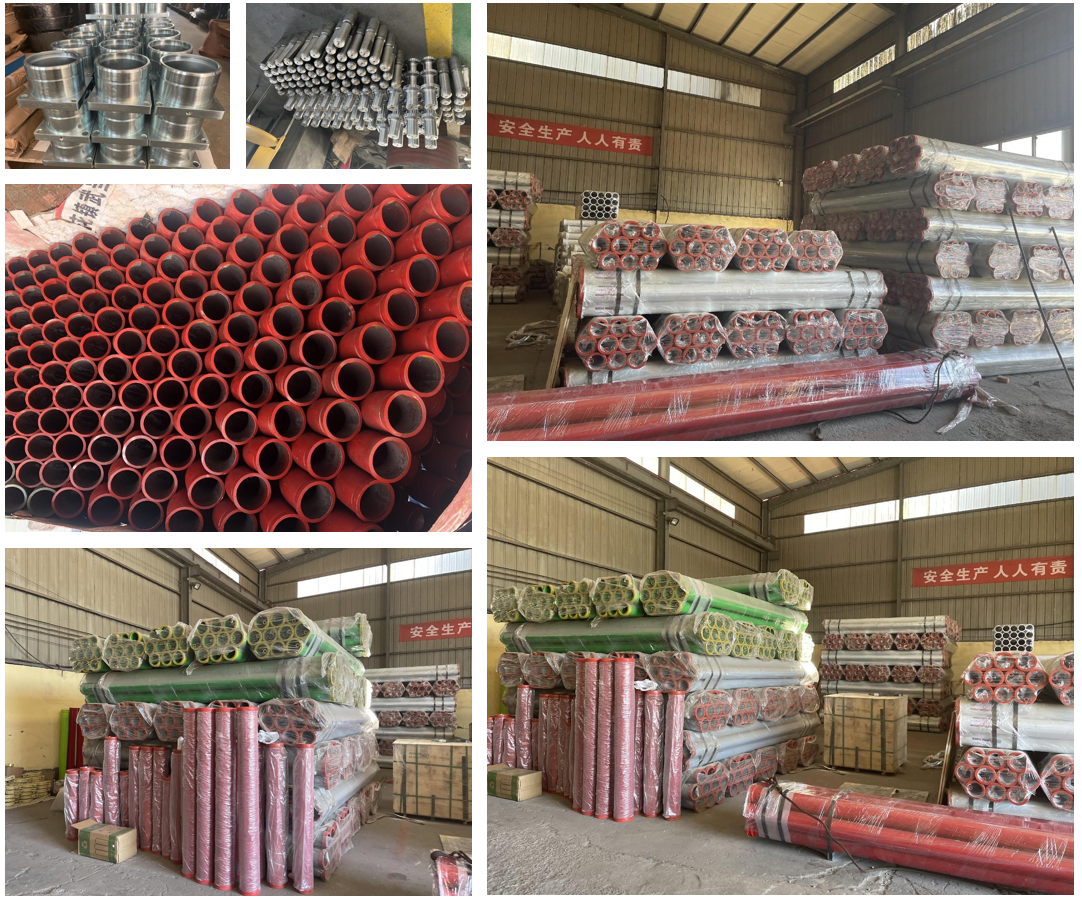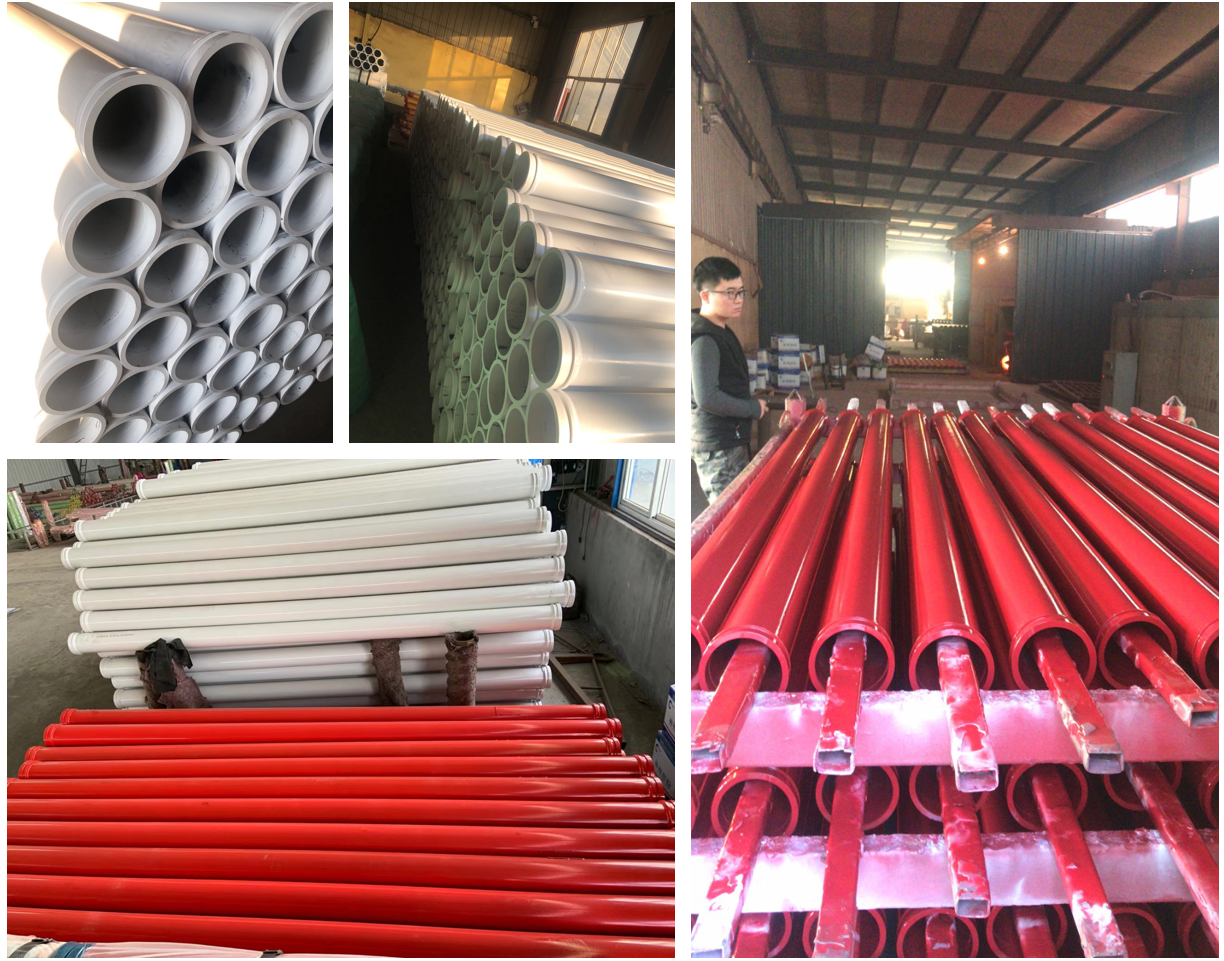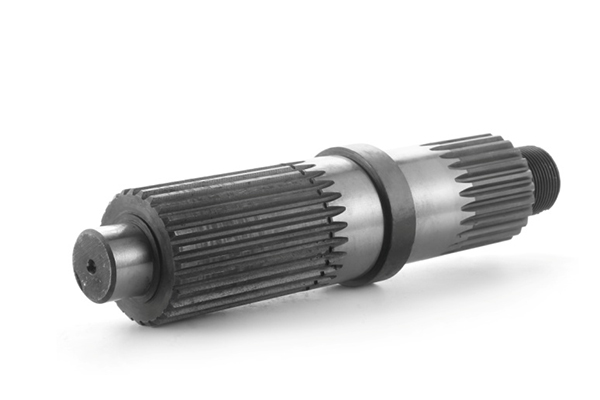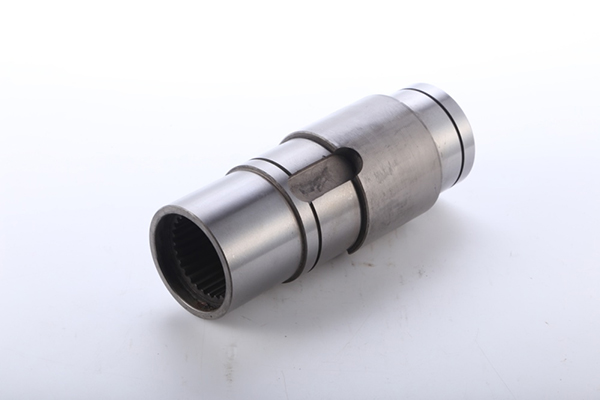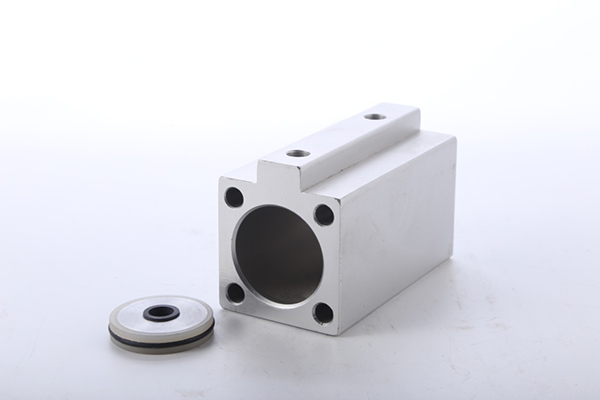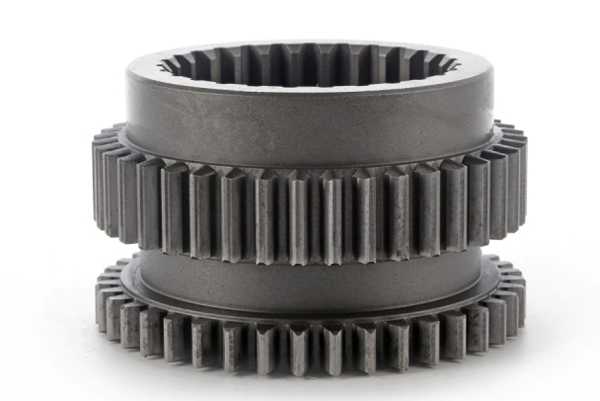Putzmeister Splined Shaft

Description
The Driver-shaft is one of the key parts of the driving part of the construction machinery chassis. It is subjected to complex bending, torsional loads and large impact loads during use, which requires the semi-shaft to have high fatigue strength, hardness and good wear resistance. The service life of the semi-shaft is not only affected by the plan and material selection at the product process design stage, but also the forging production process and the quality control of the forgings are also very important.
Process quality analysis and control measures in the production process
1 Cutting process
The quality of blanking will affect the quality of subsequent free forging blanks and even die forging. The main defects in the blanking process are as follows.
1) The length is out of tolerance. The blanking length is too long or too short, too long may cause the forgings to be excessively positive in size and waste materials, and too short may cause the forgings to be dissatisfied or small in size. The reason may be that the positioning baffle is set incorrectly or the positioning baffle is loose or inaccurate during the blanking process.
2) The slope of the end face is large. A large end surface slope means that the inclination of the end surface of the blank with respect to the longitudinal axis exceeds the specified allowable value. When the slope of the end face is too large, folds may be formed during the forging process. The reason may be that the bar is not clamped during the blanking, or the tooth tip of the band saw blade is abnormally worn, or the band saw blade tension is too small, the guide arm of the band saw machine is not on the same horizontal line, and so on.
3) Burr on the end face. When sawing bar material, burrs are generally prone to appear at the final break. Blanks with burrs are likely to cause local overheating and overburning when heated, and are easy to fold and crack during forging. One reason is that the saw blade is aging, or the saw teeth are worn, not sharp enough, or the saw blade has broken teeth; the second is that the saw blade line speed is not set properly. Generally, the new saw blade can be faster, and the old saw blade is slower.
4) Cracks on the end face. When the material hardness is uneven and the material segregation is serious, it is easy to produce end face cracks. For blanks with end cracks, the cracks will further expand during forging.
In order to ensure the quality of blanking, the following preventive control measures have been taken during the production process: before blanking, verify the material brand, specification, quantity, and smelting furnace (batch) number in accordance with the process regulations and process cards. And check the surface quality of the round steel bars; the blanking is carried out in batches according to the forging number, material brand, specification and melting furnace (batch) number, and the number of blanks is indicated on the circulation tracking card to prevent the mixing of foreign materials; When cutting the material, the system of “first inspection”, “self-inspection” and “patrol inspection” should be strictly implemented. The dimensional tolerance, end slope and end burr of the blank should be inspected frequently according to the process requirements, and the inspection is qualified and the product status is marked. The order can be changed afterwards; during the blanking process, if the blanks are found to have folds, scars, end cracks and other visible defects, they should be reported to the inspector or technicians for disposal in time; the blanking site should be kept clean, with different material grades and smelting Furnace (batch) number, specifications and dimensions should be placed separately and clearly marked to avoid mixing. If material substitution is required, the approval procedures for material substitution must be strictly followed, and materials can only be discharged after approval.
2 Heating process.
The semi-shaft production process is heated by two fires, the free forging billet is heated by a gas furnace, and the die forging is heated by an induction electric furnace, so the preventive control of the heating sequence is more complicated and more difficult; in order to ensure the heating quality, we have formulated the following quality specifications:
When the gas stove is heated, it is not allowed to directly charge the material in the high temperature zone, and it is not allowed to spray the flame directly on the surface of the blank; when heating in the electric furnace, the surface of the blank must not be contaminated with oil. The heating specifications shall be implemented according to the requirements of the corresponding forging process regulations, and the heating temperature of 5-10 pieces of blanks shall be fully verified before the shift to prove that the heating parameters are stable and reliable. The billet cannot be forged on time due to equipment and tooling problems. It can be processed by cooling or out of the furnace. The pushed billet should be marked and stored separately; the billet can be heated repeatedly, but the number of heating cannot exceed 3 times. The material temperature when the blank is heated should be monitored in real time or regularly with an infrared thermometer, and the heating record should be made.
3 Billet making process.
Common defects during billet making include excessive diameter or length of the intermediate billet rod, surface hammer marks, and poor step transitions. If the diameter of the rod is too positive, it will be difficult to put it into the cavity during die forging. If the rod is small negative, the coaxiality of the forging may be too poor due to the large gap of the rod during die forging; surface hammer marks and poor step transition may be possible Lead to pits or folds on the surface of the final forging.
4 Die forging and trimming process.
The main defects in the semi-shaft die forging process include folding, insufficient filling, underpressure (not hitting), misalignment and so on.
1) Fold. The folding of the semi-shaft is common on the end face of the flange, or in the step fillet or in the middle of the flange, and is generally arc-shaped or even semi-circular. The formation of the fold is related to the quality of the blank or intermediate blank, the design, manufacture and lubrication of the mold, the fastening of the mold and the hammer, and the actual operation of forging. Folding can generally be observed with the naked eye when the forging is in a red hot state, but it can usually pass the magnetic particle inspection in the later stage.
2) Partially filled with dissatisfaction. The partial dissatisfaction of the semi-shaft forgings mainly occurs at the outer round corners of the rod or flange, which is manifested as the rounded corners are too large or the size does not meet the requirements. Dissatisfaction will lead to a reduction in the machining allowance of the forging, and when it is serious, the processing will be scrapped. The reasons for the dissatisfaction may be: the design of the intermediate billet or blank is unreasonable, its diameter or length is unqualified; the forging temperature is low, and the metal fluidity is poor; the lubrication of the forging die is insufficient; the accumulation of oxide scale in the die cavity, etc.
3) Misplacement. Misalignment is the displacement of the upper half of the forging relative to the lower half along the parting surface. Misplacement will affect the machining positioning, resulting in insufficient local machining allowance. The reasons may be: the gap between the hammer head and the guide rail is too large; the design of the forging die lock gap is unreasonable; the mold installation is not good.
5 Trimming process.
The main quality defect in the trimming process is large or uneven residual flash. Large or uneven residual flash may affect the machining positioning and clamping. In addition to the increase in the local machining allowance, it will also cause the machining deviation, and may even cause cutting due to intermittent cutting. The reason may be: the punch of the trimming die, the gap of the die is not designed properly, or the die is worn and aged
In order to prevent the above-mentioned defects and ensure the quality of forgings, we have formulated and adopted a series of prevention and control measures: determine the appropriate blank or intermediate blank size through design review and process verification; in the mold design and verification stage, except for the conventional mold In addition to cavity layout, bridge and silo design, special attention has been paid to step fillets and lock gaps to prevent folding and mis-shifting, strict quality control of the process of blanking, heating, and free forging billets, and focus on the oblique surface of the billet. Degrees and burrs on the end face, step transition of the intermediate billet, the length of the rod, and the temperature of the material.

Features
Part number P150700004
Application PM Truck Mounted Concrete Pump
Packing Type

Packing
1.Super wear and impact resistant.
2.The quality is stable and reliable.

Our Warehouse
